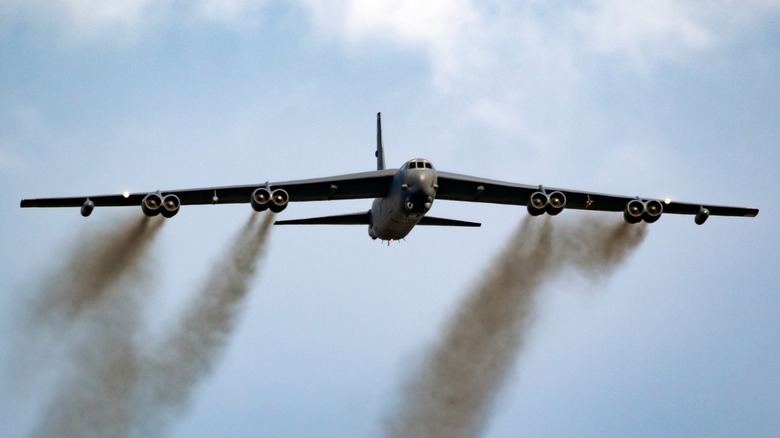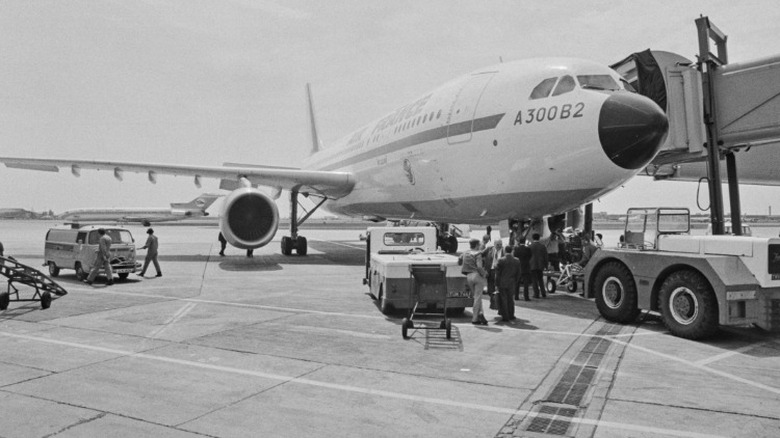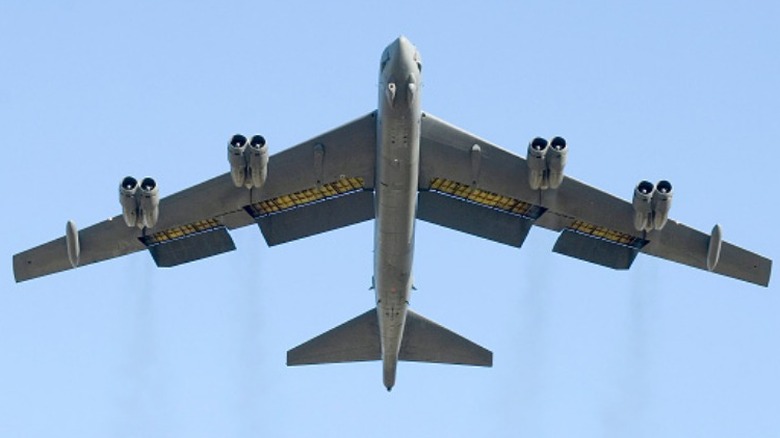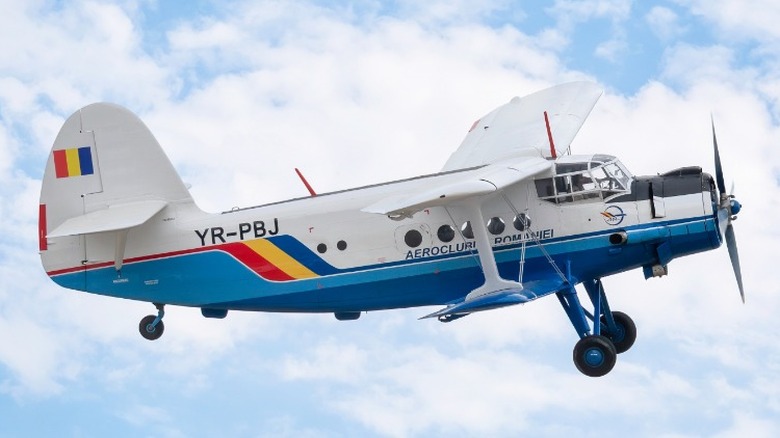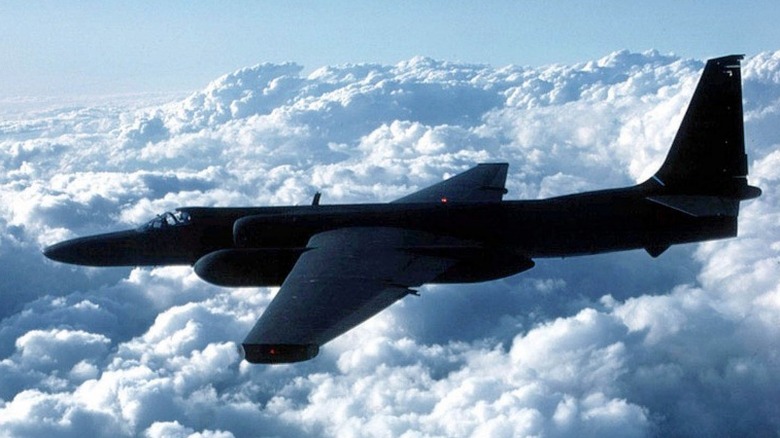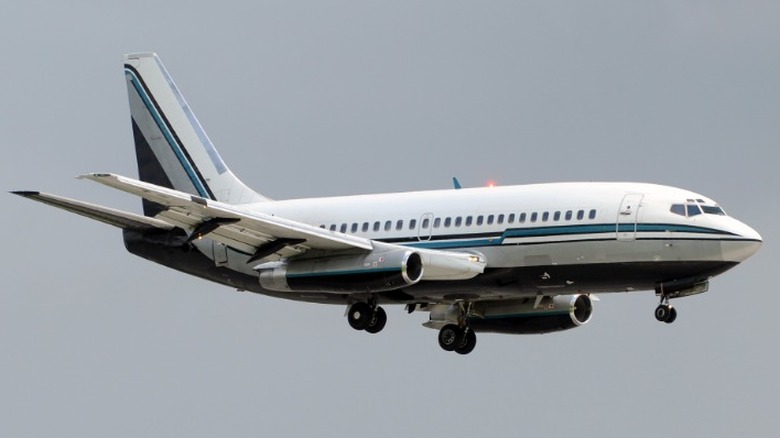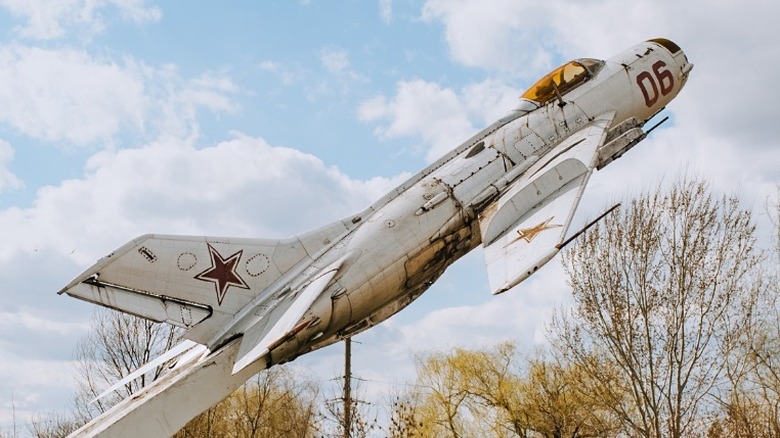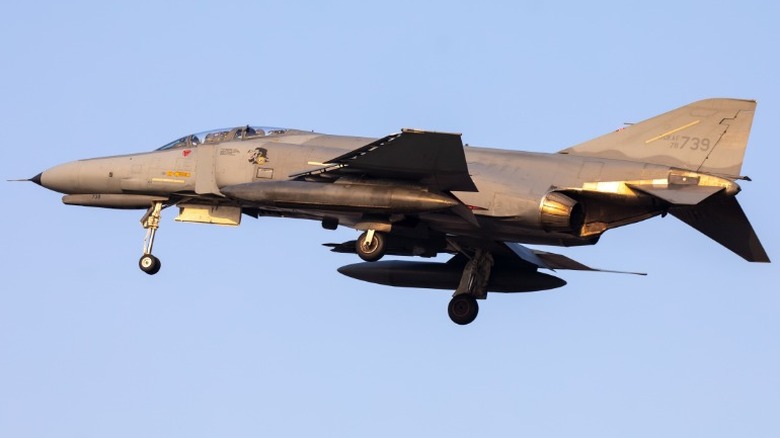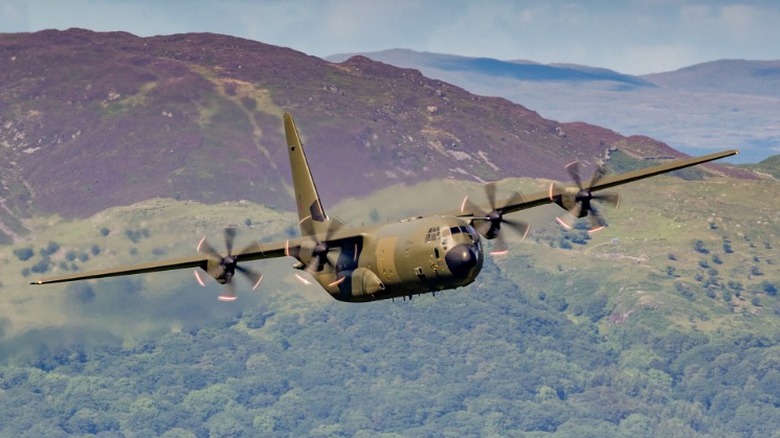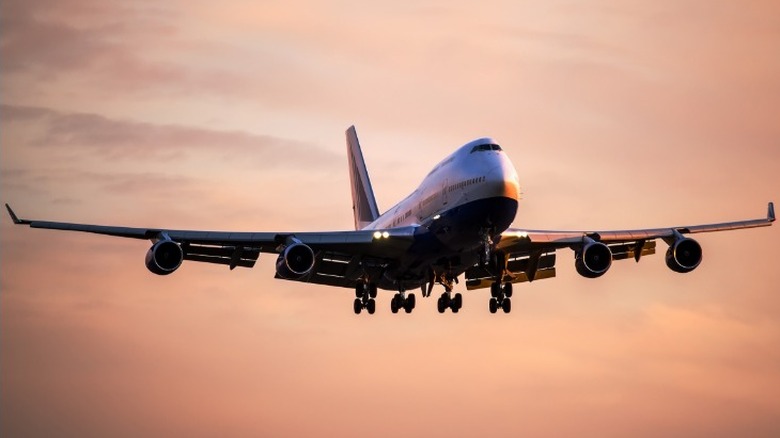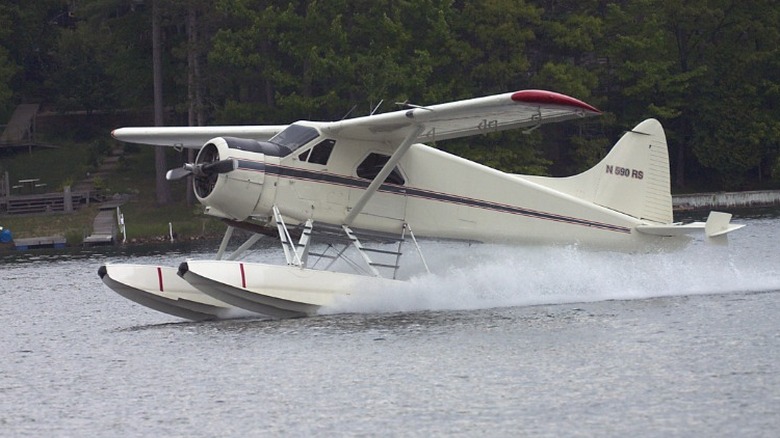The 10 Oldest Aircraft That Are Still In Service Today
While many of us buy a new car every three years, aircraft have a much longer lifespan. Carrying passengers high in the sky raises the stakes significantly and that has necessitated extremely strict safety protocols for every facet of the industry. For the aircraft themselves, manufacturing tolerances are extremely tight, with engines and airframes that are built to exacting standards to ensure safe operation for hours on end. The high aircraft standards have the secondary benefit of making machines that are extraordinarily robust and can last for decades.
Due to the extremely high cost of anything aviation-related, most planes are bought for commercial purposes by large companies that can afford such large outlays. Having equipment that can last for years and years offers a better opportunity to recoup expenses, making expensive aircraft sound investments. However, a myriad of reasons can keep airplanes flying longer than expected, and the total time spent in the air by some of them is really impressive. Here are 10 of the longest-flying planes still in service.
Airbus A300-B2
Designs from the French aircraft company Aérospatiale (now Airbus) for the A300 medium-range passenger aircraft originated in the 1970s and it would be the first twin-engine widebody airliner. Production of these planes ended in 1984, and they have been flown on medium and long-haul flights for decades by carriers around the world. The A300 fulfilled a need for more passengers than what most commuter planes could carry but on routes that could not support the use of a jumbo jet, such as the Boeing 747 or Airbus A380. However, with its origins more than 50 years ago, the A300 has been superseded by more modern aircraft with better fuel efficiency and advanced avionics, such as the A340.
Although passenger versions of the A300 have largely been replaced by newer planes, UPS still flies with a fleet of A300s. Cockpit upgrades were scheduled to be performed to its fleet of A300 aircraft as recently as 2019. While the A300 has been relegated to cargo duty by Western carriers, at least one was still in service with Iran Air as of 2020 but may have since been stored. Faced with harsh sanctions against civil aviation, Iran is unable to upgrade its flying stock and is forced to keep its aging aircraft in the skies.
B-52 Stratofortress
With initial testing that began shortly before the Eisenhower administration took office in 1953, the B-52 Stratofortress has been keeping the skies over America and elsewhere safe for decades. A total of 744 B-52s were constructed, including 104 examples of the final B-52H model, which were delivered up until 1962. This makes the B-52 one of the oldest aircraft in military service anywhere in the world.
The B-52H aircraft in its current makeup is capable of carrying 70,000 pounds of weapons payload and is configured with abilities to deliver a range of munitions to a variety of targets. Among the munitions possible to be delivered are AGM-84 Harpoon missiles, AGM-142 Raptor missiles, conventional unguided bombs, joint direct-attack munitions, and several others — including some with nuclear warheads.
Of course, the designers of the B-52 had not considered this plane would still be flying 70 years after its plans were drawn up. The aircraft still in service recently went through an upgrade process in which new engines were installed and avionics updated such that they would be fit to see service until 2040, which means the B-52 could see nearly a century in the air before they are finally sent to the boneyard.
Antonov An-2
Although industry and innovation in the Soviet Union failed badly towards the end of its breakup, the post-war era saw tremendous achievements and excellent industrial aircraft output. The Antonov Design Bureau is a Soviet aircraft manufacturer founded in Ukraine that is still around and responsible for giant cargo planes today. The An-2 first took flight in 1947 and entered serial production in 1949 in Kyiv. It quickly became popular across the Soviet Union to the point that it was manufactured in several plants across the Communist domain from Poland to China. It was adopted by civilian and military concerns that chose the plane for its ability to seemingly fly anywhere.
The former Soviet and, to a lesser degree, modern Russian territories include far-flung locations often located in the remote wilderness that are inaccessible by highway and often by train as well. The An-2 is indispensable in creating a lifeline for remote villages by offering access to population centers through small and hearty aircraft. Today, it is estimated that up to 90% of routes to small and distant destinations are served by An-2 produced over the last 70 years alongside versions still produced in China.
Efforts have been put forth to replace the An-2 with a modern aircraft. However, continued financial difficulties since the breakup of the Soviet Union has prevented any such plans from coming to fruition, keeping this dependable workhorse in the sky for the better part of a century.
Lockheed U-2
The Cold War was a turbulent period in which nations all over the Earth jockeyed for power and created a stalemate in which no one side could position itself to have the upper hand. As a result, immense resources were put into espionage and reconnaissance in an attempt to stay one step ahead of the adversary. In this endeavor, Lockheed produced many planes for the U.S. military, including its U-2 spy plane.
Born out of Lockheed's amusingly nicknamed Skunk Works division, the U-2 is a surveillance aircraft capable of flying at 70,000 feet, well above the ceiling of most other airplanes, and is equipped with high-resolution photography equipment. It first entered service in 1955 and later performed flyovers of the Soviet Union, creating a trove of valuable intelligence for the Department of Defense. The Soviets eventually shot one down with surface-to-air missiles in 1960, effectively ending the Soviet flyovers — but that did not end the U-2 program.
The U-2 is still in service and has been upgraded many times and now carries the latest in sophisticated electronic surveillance. Even in the era of satellite technology with advanced photography, sending planes on missions continues to provide invaluable intelligence that can be collected no other way.
Boeing 737-200
The Boeing 737 is a popular narrow-body aircraft that is widely used throughout the world and has been in production since 1967. The most recent version of this model is the 737 MAX, which is the latest in a long line of 737 aircraft. Despite the availability of brand-new jets with the latest avionics and engine technology, not all airlines have upgraded just yet. Airliners are extremely expensive, and sometimes it makes sense to keep older airframes flying. That is true of at least one carrier in Canada — Nolinor Aviation.
Most people, even in Canada, are probably not familiar with this carrier. That is because it specializes in chartered flights and is capable of carrying passengers or cargo, including petroleum, to many destinations in North America and Europe. A good portion of the work advertised by Nolinor Aviation is to remote destinations, particularly in the north of Canada where environmental conditions tend to be difficult and extreme. Having the ability to rapidly change the type of payload and carry it to cold and icy locales is the primary reason Nolinor still flies its old Boeing 737-200 planes.
Nolinor Aviation currently flies the two oldest 737-200 airframes in use, one of which was produced in 1974 and the other in 1975. Until a better-suited aircraft comes along and makes logical business sense for the carrier, these planes will likely continue to fly for the foreseeable future.
Mikoyan-Gurevich MiG-19
The beginning of the jet age coincided with the start of the Cold War and it not only kicked off a nuclear arms race, it also began a competition to build the world's best jet fighter. Mikoyan-Gurevich of the Soviet Union began with its MiG-15 as its first operational fighter jet in 1946 and advanced to the MiG-19 by 1953. The MiG-19 was the Soviet's first fighter capable of supersonic flight and was widely produced and offered for sale to foreign nations. Along those lines, a license-built model was also produced in China as the Shenyang J-6. While the Soviets built just over 2,000 copies of this jet, the Chinese made more than 4,500 from 1959 until some time in the '90s.
Despite being an airframe designed in the wake of World War 2, some copies of the plane are still operational. Both Soviet and Chinese versions were exported to countries within the Communist sphere of influence. Given that many countries formerly aligned with the Soviet Union are today very poor or just now developing, their inventories of fighter aircraft are aged and often decrepit.
As of 2022, North Korea, Vietnam, and Pakistan retain MiG-19 and J-6 aircraft in their fleets, although many of them were likely produced much later. Recently, China has released pictures of a fleet of MiG-19 jets without cockpits to function as supersonic attack drones.
McDonnell Douglas F-4 Phantom II
Beginning service in 1961, the McDonnell Douglas F-4 Phantom II was one of the premier fighting aircraft of the United States and remained in service until 1996. More than 5,000 aircraft were produced from 1958 through 1979, making it the most produced of any American fighter jet, and nearly a thousand of those were sold overseas to friendly nations. Among these export nations was Iran, an ally of the U.S. before the Islamic Revolution.
The Islamic Republic of Iran Air Force (IRIAF) keeps much American equipment in its inventory as sanctions have made it extremely difficult to purchase new aircraft for military or civil purposes. As a result, the IRIAF is forced to keep aging airframes in the sky by scavenging retired aircraft for parts and continuing to lose aircraft as their airworthiness degrades. New parts are unavailable to the country and manufacturing capabilities for advanced aerospace do not yet exist in the republic.
As a result, Iran will continue to operate these F-4 Phantom II fighter jets until they can no longer fly — despite being outmatched by the aircraft from almost any adversary — while awaiting replacements that will never come.
Lockheed C-130 Hercules
One might think that the supersonic and stealth strike fighters are what keep America's armed forces up to snuff, but the truth is that the military at large relies on aircraft of a completely different nature. Among the most important aircraft deployed by the United States is the Lockheed C-130 Hercules. It is a cargo and troop transport aircraft that provides the backbone of modern military logistics. Without supplies and personnel getting to the battlefield, no conflict can be resolved.
Difficulties in keeping troops supplied during the Korean War led defense officials to have a new aircraft created that would be versatile and robust enough to cover operating in a wide range of tactical environments. By 1954, the first flight of a new aircraft in testing occurred, leading to the eventual production of 2,000 aircraft. Originally, the Hercules could travel at 336 mph at 20,000 feet but has since been upgraded to reach 410 mph at up to 26,000 feet carrying 44,500 pounds of payload.
The most recent model, often referred to as the Super Hercules, can be configured to carry 128 combat troops or 92 paratroopers or one of any number of cargo configurations, including fuel for aerial refueling. Another variation, the AC-130 configuration, serves as a formidable gunship carrying a daunting roster of armaments and electronic warfare equipment. It is safe to say that the modern American military would have seriously diminished capabilities without this long-serving aircraft in its fleet.
Boeing 747-121
Boeing began work on its 747 jumbo jet in the mid-'60s, shrinking the planet by making it possible to ferry more passengers longer distances than ever before. With its double-decker seating arrangement and immense size, the 747 became an icon of the jet age overnight after it entered service in 1970.
As a wide-body airliner, passengers could be placed 10 across with two aisles and extra room upstairs. Until the fuel crisis of 1973, the upper deck featured a lounge for first-class passengers offering a full bar and dinner service. The 747 continued to be the pinnacle of long-haul flight for the next few decades until smaller aircraft could be configured with the same number of passengers on more fuel-efficient airframes.
Most 747 passenger aircraft have been replaced with modern models such as the 777 and 787 Dreamliner, although many 747 continue to serve as freighters. However, at least one 747-200 plane is in service with the Iranian Air Force. This aircraft was built in 1976 and originally delivered to Iraqi Airways, but was taken by Iran as reparations following the Iran-Iraq war. It is the oldest 747 still in service and has been seen as recently as 2020 in Belgrade. Given the inability of Iran's government from importing any components for repairs or upgrades, it is likely this particular 747's days are numbered.
De Havilland Canada DHC-2 Beaver
Canada's landscape is renowned for its unending beauty and the pristine nature of its untouched wilderness. However, there are populations dotted throughout the vast landscape and that same wilderness is notoriously difficult to traverse, with Mother Nature throwing an arsenal of weather, terrain, and wildlife to stop you from arriving at your destination. Fortunately, Canadians have a Beaver to help them — specifically, they have the De Havilland Canada DHC-2 Beaver, a small but tough bush plane capable of landing and taking off in extreme conditions.
Produced from 1947 to 1967, this iconic De Havilland seaplane makes the need for aviation infrastructure moot. Its pontoons allow it to land on water but it can also be outfitted with wheels or skis for land and snow. It also features a patented wing and flap system that allows for extremely short takeoffs and landings. Its service history includes military service in the Korean War and expeditions in Antarctica as well as being used in the deserts of Africa. Even though it has not been produced in more than a half-century, the Beaver will continue to fly as long as people can keep them safely in the air.
